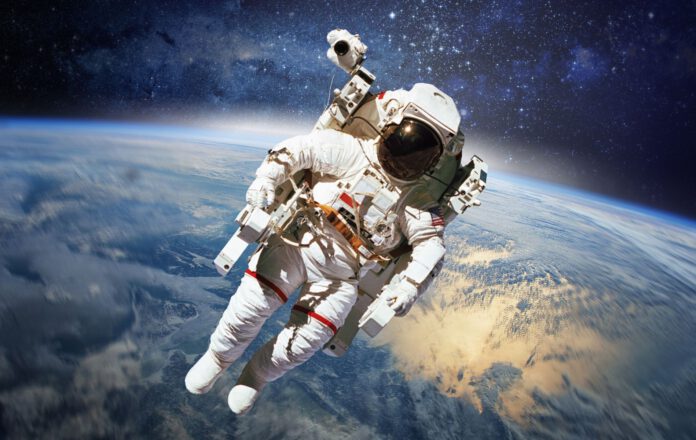
An innovative spacesuit inspired by the American science fiction film “Dune” enables astronauts to convert urine into drinking water, addressing multiple challenges simultaneously.
During spacewalks, astronauts need to relieve themselves within their spacesuits, which is not only uncomfortable and unhygienic but also wasteful, as the water from urine is not reused the way it is on the International Space Station. A potential solution is a fully encompassing “stillsuit,” akin to the one in “Dune.” This suit can capture and purify water lost through sweating and urination, converting it into potable water. Now, scientists are turning science fiction into reality.
The Suit
Researchers have developed their own “stillsuit” that captures and filters urine. The suit includes underwear made of multiple layers of flexible fabric. This underwear is connected to a silicone collection cup, which varies in size for men and women and fits perfectly around the genital area. The inside of the cup is lined with polyester microfiber or a blend of nylon and spandex. These materials help divert urine away from the body into the interior of the cup, where a vacuum pump then extracts it. An RFID tag, connected to an absorbent hydrogel, activates once it detects moisture, which triggers the pump.
Filtration
After the urine is collected, it is passed through the urine filtration system. It undergoes a two-step filtration process: first with forward osmosis and then with reverse osmosis, achieving an efficiency rate of 87 percent. This process uses a concentration gradient to remove water from urine, aided by a pump that separates water from salts. The purified water is then enriched with electrolytes and pumped back into the suit’s drinking reservoir, ready for consumption. The entire process of collecting and purifying 500 ml of urine takes only five minutes.
“The design essentially includes an external catheter that operates on a vacuum and is connected to a combination of reverse and forward osmosis units,” explains researcher Sofia Etlin. “This ensures a constant supply of drinking water, with various safety mechanisms to protect the astronaut’s health.”
Compact Design
The system includes control pumps, sensors, and an LCD screen, all powered by a 20.5V battery with a capacity of 40 amp-hours. It is compact, measuring 38 by 23 by 23 cm and weighing about eight kilograms, making it easy to carry on the back.
Addressing Existing Problems
The need for this futuristic spacesuit is significant. Astronauts have long complained about the discomfort and hygiene issues of the existing system in traditional NASA spacesuits, known as the Maximum Absorbency Garment (MAG). This system, used since the late 1970s, functions like a multilayer adult diaper made of superabsorbent polymer. “Reports of leakage in the MAG have led to health issues such as urinary tract infections and gastrointestinal problems,” says Etlin. “Furthermore, astronauts currently have only one liter of water available in their suit’s drinking bags, which is insufficient for planned long moonwalks lasting up to ten hours, and even emergency situations could take up to 24 hours.”
Moon and Mars Missions
The new system is specifically designed for upcoming moon and Mars missions. NASA plans to return to the moon in 2025 and 2026, with astronauts first orbiting the moon and then landing on its south pole. These missions will be followed by manned expeditions to Mars, scheduled for the early 2030s. A new suit that can effectively convert urine into drinking water will be invaluable for these missions.
The study, published in the journal Frontiers in Space Technology, marks a significant advancement in the development of advanced space technology. With the prototype ready, the new design can now be tested under simulated conditions and later during actual spacewalks. “Our system will be tested in simulated microgravity conditions, as this is the primary factor we need to consider in space,” says researcher Christopher Mason. “These tests will ensure the system functions properly and is safe before being used during real space missions.”











